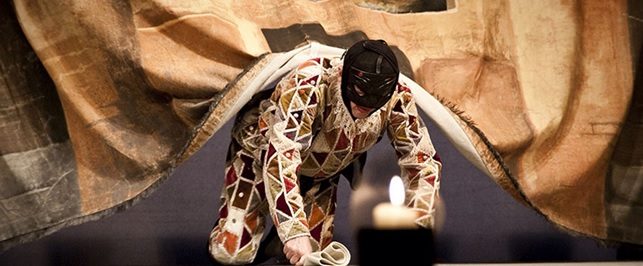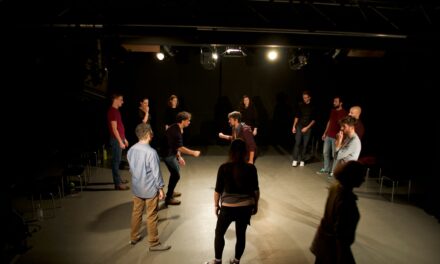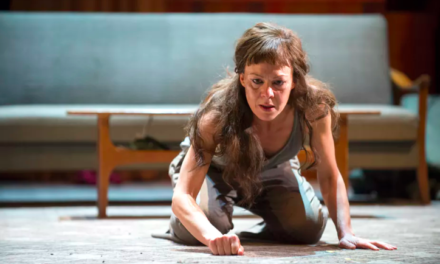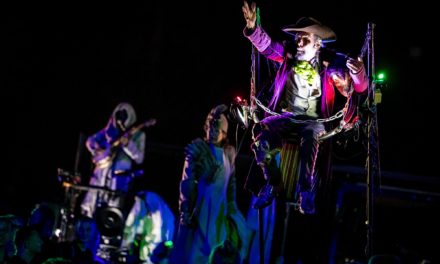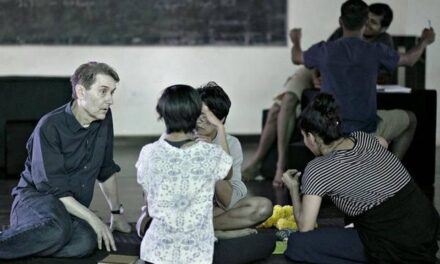It is not easy to approach a work such as Giorgio Strehler’s Arlecchino Servitore Di Due Padroni, based on Carlo Goldoni’s Il Servitore Di Due padroni—a play which by itself comes from the desk of one of Italy’s foremost playwrights, who went on to innovate a theatrical system which lasted (and gained mass acclaim) for two centuries, brought to the stage by one of the greatest directors to ever grace our soil.
It’s a work which to this day remains a staple sight on stages, and which is notable for continuing the director’s legacy well beyond his death. It’s been twenty years since Strehler’s passing. And yet, the pièce’s title still towers over playbills, with the deceased’s name listed as that of the play’s director.
Arlecchino is, by all accounts, the most famous Italian theatrical play in the world: so, if anyone’s artistic direction was great enough to survive its maker’s death, it is no surprise that it was Strehler’s.
There’s more to it. The year 2018 marks Arlecchino’s 70th year: the monument synonymous with “theatre” now counts seven glorious, gargantuan decades under its belt.
And yet, it has not grown old. Not by any means.
You can trust us on that.
Perfectly at ease on the stage of Milan’s Piccolo Teatro Grassi (its stage: the one which first nurtured it, and its true home thereafter) from April 24 to May 13, 2018, Arlecchino feels no older today than it did last century. It lasts three full hours–split by two carefully placed pauses–whose passing the spectator barely perceives, too viscerally caught in the flow of the work to bother about something as trivial as time.
For, indeed, Arlecchino is a leap back in time: a voyage towards the Italian 1700s, towards an age where the Commedia dell’Arte, Europe’s foremost theatre form for over two hundred years, was slowly being transformed from the inside by the work of Carlo Goldoni.
Equally masks from the dying Commedia and facets of eighteenth-century Venice, Goldoni’s characters–and Strehler’s–are colorful, noisy, outgoing relics from a theatre of old. But there’s more to them: for in Strehler’s work, the masks are themselves, actors. A stage tops the actual stage[i], and a wizened prompter helps performers out when their memory gives. The characters themselves are figures of old cosplaying as figures of old: penniless actors portraying pompous nobles and ambitious bourgeois entrepreneurs, stuttering innkeeps, and wily servants. Strehler’s Arlecchino is a masterfully crafted metatheatrical game meant to show two Venices: the real one, and its twisted mirror, animated onstage.
Performers interact in a myriad of languages, understanding each other despite the Babel of their tongues. The action is more than enough to be understood, after all: what’s more, it effectively speaks for itself. Jests and continuously recurring physical gestures dominate their play, allowing spectators to keep their grip on it even as the story itself gets more and more convoluted, as was customary for theatre back then.
Quoting director and critic Paolo Bosisio, Arlecchino is no less transparent to an Italian audience than to a Japanese one.
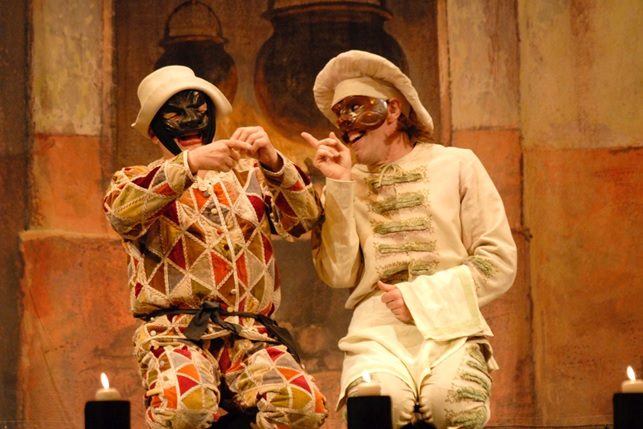
Press photo from a staging of Arlecchino.
The play is a choral one, and each member of the cast is given room to shine. Its namesake, however, is bound to stand out.
Arlecchino, the “servant of two masters,” is the focus of the action: clad in his trademark colorful patches and sporting a thick northern Italian accent, Arlecchino is as much the cause of the problems troubling his peers as he is their solution. Always hungry but hopeless to fill his growling stomach[ii], full of guile and yet helplessly reckless, prone to petty deception and yet untouched by the thought of pocketing the fortunes placed right in his hands, Arlecchino is both a stereotype and a living, breathing emblem of theatre itself: an irresistible mask brought to the stage for over fifty years (2,949 different stagings: a Guinness World Record) by Ferruccio Soleri[iii] though sometimes granted his face by the equally skilled Enrico Bonavera (who has been playing the role himself for fifteen years).
“Arlecchino è sempreuguale e semprediverso.Ed è libero dal tempo chepassa.[iv]”
—Giorgio Strehler
Seventy years of continuous different stagings, twenty years of independence from its creator, and an actor who has dedicated the entirety of his artistic life to portraying the play’s main character, putting every other role aside to continue wearing its colorful livery: that’s what Arlecchino is.
A never-changing play, and yet one fated to forever retain its newness, its intrinsic modernity.
A piece of theatre engraved in the ages, to transcend “age” itself.
Arlecchino keeps laughing, jesting, and talking to himself, unburdened by the weight of fleeting years. And when the play demands it, he takes down the fourth wall (whose borders are marked by a line of candles, located in the proscenium and lit before each act), reaching out to a public which he feels is always close to him.
The audience is quick to heed his call: for a timeless act of love for true theatre will never feel out of time.
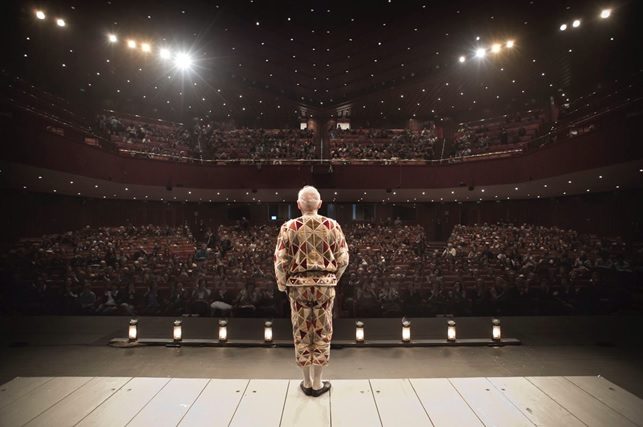
Press photo from a staging of Arlecchino.
Notes:
i. An ever-changing, simplistic drape setting the scenery of the meta-play over a baroque, opulent background: the poor possessions of the actors by trade standing out against the wealth of their patrons (or patròn, as Arlecchino says in his colorful dialect).
ii. A defining trait of the mask Arlecchino’s character developed from, that of the “Zanni,” a theatre stereotype is best known for its portrayal at the hands of the late Dario Fo (a Nobel Prize winner, and yet another monument of Italian and global theatre).
iii. Soleri is also the one person who has consistently been credited as the depositary of Strehler’s legacy: the one who, having known the first Arlecchino, Marcello Moretti, and started out as his replacement (much as Bonavera did as Soleri’s own), is most acquainted with the play and its mechanisms, and who has been instrumental in the preservation of its original form and its continued existence. Indeed, Soleri is no less a living theatrical monument than Arlecchino.
iv. “Arlecchino is always the same and yet always different. And he is free from the passing of time.”
This post was written by the author in their personal capacity.The opinions expressed in this article are the author’s own and do not reflect the view of The Theatre Times, their staff or collaborators.
This post was written by Davide Cioffrese.
The views expressed here belong to the author and do not necessarily reflect our views and opinions.

